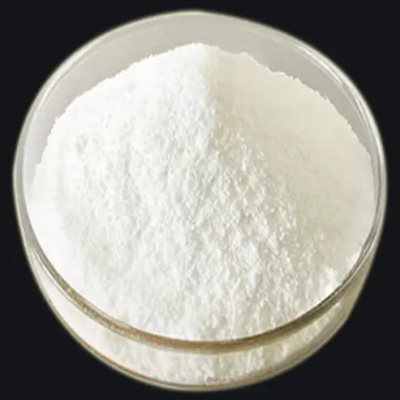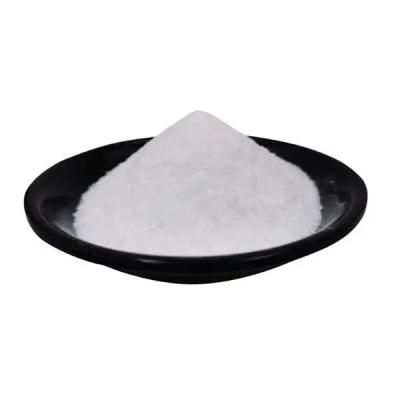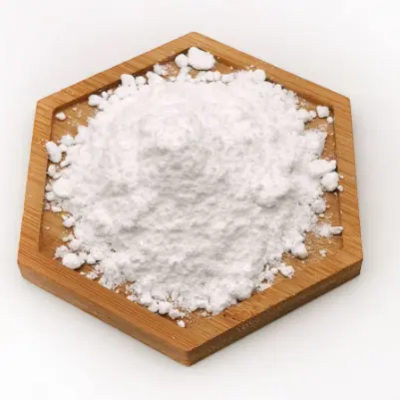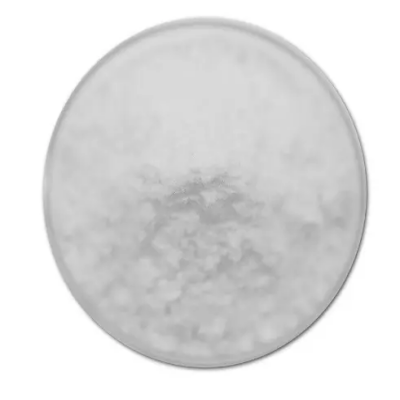-

tert-butyl 1-isopropyl-6-oxopiperidin-3-ylcarbamate CAS:2891599-72-5
tert-butyl 1-isopropyl-6-oxopiperidin-3-ylcarbamate is a heterocyclic compound containing a piperidine ring substituted with an isopropyl group, ketone, and tert-butoxycarbonyl protecting group. This structure engages in nucleophilic additions and substitutions through its ketone and carbamate moieties.
-

trans-tert-butyl 4-(2-hydroxycyclohexyl)piperazine-1-carboxylate CAS:943906-69-2
trans-tert-butyl 4-(2-hydroxycyclohexyl)piperazine-1-carboxylate is a molecule containing a piperazine ring substituted with a tert-butyl carbamate and cyclohexyl alcohol. This structure allows participation in diverse substitution, oxidation and addition reactions through its reactive functional groups.
-

2,2,2-trifluoro-1-(6-methoxy-1H-indol-3-yl)ethan-1-one CAS:676476-94-1
2,2,2-Trifluoro-1-(6-methoxy-1H-indol-3-yl)ethan-1-one is a chemical compound which acts as an intermediate in organic synthesis. It contains both an indole ring and a trifluoroacetyl group which allows it to participate in reactions like nucleophilic substitution and oxidation-reduction. The trifluoroacetyl group activates the alpha carbon for reactions with strong nucleophiles under mild conditions.
-
![octahydrocyclopenta[b][1,4]oxazine hydrochloride CAS:1616436-40-8 1197767-62-6](https://cdn.globalso.com/xindaobiotech/GRKLPVJ3QSJRM99.png)
octahydrocyclopenta[b][1,4]oxazine hydrochloride CAS:1616436-40-8 1197767-62-6
Octahydrocyclopenta[b][1,4]oxazine hydrochloride is a bridged heterocyclic system containing an oxygen heterocycle fused to a cyclopentane ring. This salt participates in diverse substitution, addition and condensation reactions through the basic nitrogen and reactive ring system.
-

2-tert-butyl 8-methyl 5-amino-3,4-dihydroisoquinoline-2,8(1H)-dicarboxylate CAS:2757925-41-8
2-tert-butyl 8-methyl 5-amino-3,4-dihydroisoquinoline-2,8(1H)-dicarboxylate is a heterocyclic scaffold containing an isoquinoline system substituted with amino, methyl, and tert-butyl ester moieties. This elaborate structure engages in versatile nucleophilic additions, substitutions and decarboxylations reactions through its reactive functional groups.
-

methyl 1-(4-bromophenyl)-3,3-dimethoxycyclobutanecarboxylate CAS:2273863-76-4
methyl 1-(4-bromophenyl)-3,3-dimethoxycyclobutanecarboxylate is a cyclic ester containing a cyclobutane ring fused to a bromophenyl group and substituted with two methoxy groups and a methyl ester. This complex structure allows participation in various cyclization, substitution, addition and ester hydrolysis reactions through its reactive sites.
-

3-(2-Fluoro-phenyl)-isoxazole-5-carbaldehyde CAS:808740-52-5
3-(2-Fluoro-phenyl)-isoxazole-5-carbaldehyde is a heterocyclic aldehyde containing an isoxazole ring fused to a fluorinated benzene ring. The presence of the formyl and fluoro substituents allows for varied reactivity. As an isoxazole derivative, it can engage in substitution and addition reactions on the heterocyclic system. The aldehyde functional group provides opportunities for numerous condensation pathways.
-

7-Methoxyquinolin-3-amine CAS:87199-83-5
7-Methoxyquinolin-3-amine is an aromatic amine containing a quinoline ring with a methoxy and amine substituent. The electron donating methoxy group makes the quinoline system susceptible to electrophilic aromatic substitution. Meanwhile, the amine group provides opportunities for nucleophilic chemistry. These functionalities permit diversified reaction pathways for structural modification and elaboration.
-

7-Methoxyquinolin-3-amine CAS:87199-83-5
7-Methoxyquinolin-3-amine is an aromatic amine containing a quinoline ring with a methoxy and amine substituent. The electron donating methoxy group makes the quinoline system susceptible to electrophilic aromatic substitution. Meanwhile, the amine group provides opportunities for nucleophilic chemistry. These functionalities permit diversified reaction pathways for structural modification and elaboration.
-

Methyl 2-(1,4-diazepan-1-yl)acetate hydrochloride CAS:926223-03-2
Methyl 2-(1,4-diazepan-1-yl)acetate hydrochloride is a salt containing a methyl ester linked to a 1,4-diazepane ring. This structure engages in nucleophilic substitution and addition reactions through the basic diazepane nitrogen and ester hydrolysis at the carboxylate.
-

Ethyl trans-2-amino-1-cyclohexanecarboxylate hydrochloride CAS:28250-14-8
Ethyl trans-2-amino-1-cyclohexanecarboxylate hydrochloride is an organic compound that contains both an amino and a carboxylic ester functional group. It exists as a white solid salt formed between the hydrochloric acid and the amino group of the parent molecule. The trans configuration around the amino substituent gives it a defined three-dimensional structure. This compound can participate in various substitution, addition and condensation reactions due to the reactivity of the amino and carboxylic ester groups.
-

3-(3-Fluorophenyl)isoxazole-5-carbaldehyde CAS:885273-52-9
3-(3-Fluorophenyl)isoxazole-5-carbaldehyde is a chemical compound with the molecular formula C11H6FNO2. It is commonly used as a versatile building block in organic synthesis due to its unique structure and reactivity. This off-white solid plays a crucial role in pharmaceutical, agrochemical, and material science industries. Also known as 3-fluoroisoxazole-5-carbaldehyde, it serves as a key intermediate for the production of various complex molecules owing to its distinct chemical properties.

